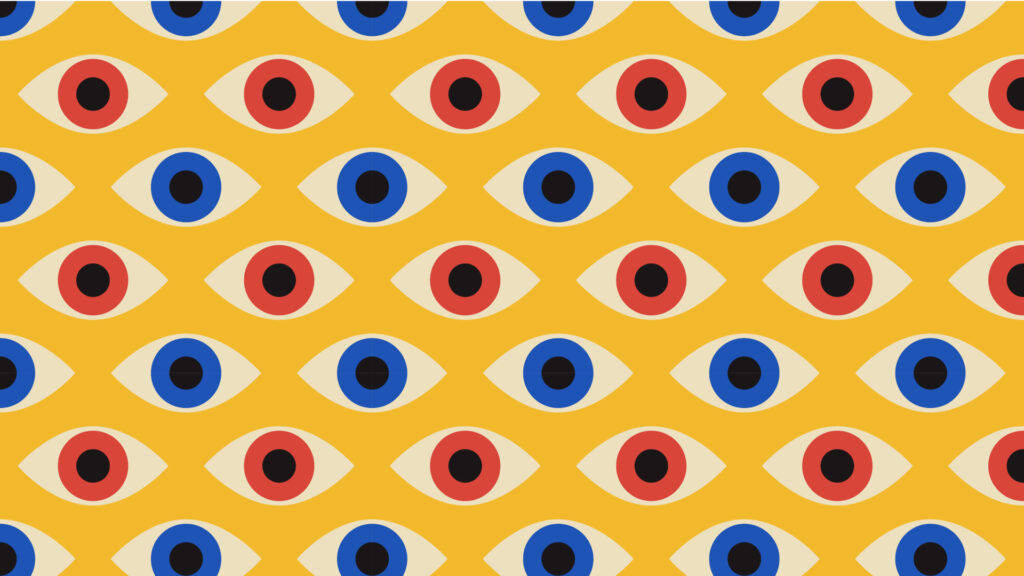All that’s to come and everything under the sun is in tune
but the sun is eclipsed by the moon.
There is no dark side of the moon really.
Matter of fact it’s all dark.
“Eclipse” from The Dark Side of the Moon, Pink Floyd (1973)
November is that time of the year that allows us to see the international space station passing above Europe just after sunset. It was clearly visible from Milan last week (check out the International Space Station tracker for updates). It got us thinking that when we look up at the night sky, the stars form a familiar pattern, unmoving. It was against this fixed background the ancients noticed some “wanderers” – the planets. We perceive the background as immobile, but in reality every star and galaxy we can observe in the night sky is moving, they are all just too far away for us to recognise that motion in our short lifespans. So how do we know?
The only way to understand if something is moving in deep space is light. To grasp this concept we must get familiar with what light is. I want you to think for a moment about the Sun. The Sun is a giant nuclear reactor, every second fusing together more than 4 millions of tonnes of hydrogen atoms to generate helium – bigger stars with hotter interiors than the Sun go further producing heavier elements by other fusion reactions, but that is another story. These fusion reactions give off an incredible amount of energy, which keeps the atoms in the Sun in an “excited” state. When electrons in atoms become excited, they make an an energetic jump from their normal position in orbit around an atomic nucleus to reach a higher energy level, to do this they take in some of the energy from around them, just like we need more energy when we go up the stairs – it needs a particular amount of energy to get to a particular place. The electron is however not stable in this excited state, and it will eventually drop back to where it normally lives – its ground state – giving out a specific amount of energy associated with how far it has fallen. This packet of energy that is released is called a photon. Each photon, associated with a specific change in energy of an electron’s orbit, has that specific energy. The light we see from the Sun is the radiation emitted by this continuous stream of photons from all the excited atoms it contains – and it contains, well, every element under the Sun. Atoms of different elements allow different energy changes for their electrons, governed by the specific properties of each element. These differences thus cause sodium to emit (and also absorb) photons with an energy that differs from that of calcium or magnesium. The amazing thing about all this is that there is a direct and simple relationship between the energy of the emitted photon and the wavelength with which the photon travels – this photon behaves like a wave and like a particle. Thus, every time we measure the energy of a light source, we also know its wavelength and frequency, and these give its colour.
Colors become important when we start thinking about light as this continuous radiation containing all possible wavelengths. When sunlight arrives on Earth, 30% of the light is filtered by the atmosphere, clouds and ozone. The 70% that passes through belongs mainly to two “windows” of particular wavelengths. The “optical window”, between 100 and 1000 nm (nanometers), and the “radio window”, between 1 cm and 7 meters. We call light in the optical window “visible” because our eyes are sensitive to wavelengths between 390 and 780 nm which fall in this window. When light enters the eye, the energy of the photon creates a molecular change in the cells of our retina, the cones and rods we all studied in biology class – the cones being responsible for our colour perception. This change is transmitted to the brain as an electrical signal and creates the colors we see.
The longest wavelength that our eye can perceive is around 780 nm, the deep red. Wavelengths longer than this are infrared (IR), and our cones and rods can not perceive them. This is because the wavelength is too long (and too low energy) to modify the molecules in our eye for enough time. If it was a camera, we would say that the exposure is too short. On the other hand, the shortest wavelength (and highest energy) our eye can absorb is around 390 nm. Below this, the ultraviolet (UV) wavelengths are too short to pass through the cornea, the external lens of our eye.
From here we see that the entire symbolism associated with the color scale is wrong. Red is “less warm” than blue, and the color with the highest energy is not red or orange, but purple (a Monnalisa campaign will be launched shortly to re-establish the true order of the chromatic scale).
So, our eye is nothing more than a chemical film, whose molecules react to a precise dose of electromagnetic energy. Elsewhere in the animal kingdom, there are insects and mollusks that do not need the cornea, and some have adapted to use types of photonic absorption mechanisms to see UV rays. Try searching the internet for the mantis shrimp. The colors of birds and flowers, seen through the UV eyes of bees and insects, take on a whole new meaning. The petals are runways with UV directions to allow the insects to find the pollen. And then there are the snakes, which have infrared vision. The fascinating thing is that their vision is not based on a quantum photonic absorption mechanism like ours, but on a sort of thermal sensor. They have “holes” on the skin that allow the heat emitted from outside to enter and “heat” water cells in their eyes, which in turn create maps of greater or lesser intensity depending on the heat generated by their prey. This is how they see mice.
At the end of all this, don’t you wonder why we see in one way rather than another? Why do we see “visible” colors in that particular window and not IR or UV? Evolution has a rather unromantic answer. Our sun emits energy which has a peak in the “visible”, in particular at the high-energy, blue frequency end. Life on Earth has evolved by creating efficient vision systems that facilitate the absorption in this highest energy band. We see these colours because that is what we have to work with. What if we were in orbit around another type of star? Orbiting a young hot giant or supergiant star which emits a lot more blue light than the Sun, whose energy is shifted towards the ultraviolet, life may have evolved with organisms that see – and endure – the high energy of an ultraviolet window – but they would need an atmosphere that lets this pass – oxygen absorbs a lot of UV producing ozone, luckily protecting us from the damage UV can do. In the same way, on a planet orbiting a small, cool yellow or red dwarf star, emitting energy largely in the infrared field, it is reasonable to think that these could be inhabited by organisms with an infrared visual apparatus, like the snakes and reptiles. This fires a fatal blow to the conspiracy theory of a reptilian invasion on Earth. An infrared visual system does not allow high resolution vision on this planet, thus reptilians would be disadvantaged against us in a race towards the domination of Earth- I just find hard to believe that they could manage to overthrow us.
Over The Pop
There are not many things that are less glamorous than spectroscopy. Yet, if we do a bit of digging, there are hundreds of indirect references to spectroscopy in modern culture, which nobody understands because spectroscopy is a dark art, learned in underground laboratories between the physics and chemistry departments. Don’t you believe me? Check this out:
Lady Gaga’s fine fireworks show for the 2017 Super Bowl | It doesn’t matter if they come from the Prince of Wales or your brother-in-law after too many beers on the 4th of July. Fireworks are based on the fact that different elements, once heated, emit different wavelengths of light, which our brain translates into colors. In this occasion she used sodium nitrate for the white ones, copper chloride for the blue and strontium carbonate for the red.
Pink Floyd | The cover of Dark Side of The Moon is a dispersion prism. All the photons of all the elements give white light, which is a combination of all the colors of the rainbow, but a prism can separate them because the angle at which light is dispersed when it enters the prism depends on its wavelength, and we now know wavelength = colour.
V | Check out the 1983 miniseries V, or its 2009 remake, where visitors in the guise of humans appear to come in peace to get help for their ailing world, but are in fact a race of mice-swallowing reptilians (hence the special sunglasses) hell-bent on a take-over. In the original story they come from the star Sirius, which is a small binary system. But it’s an hydrogen burning star just a little bigger than our sun, to be real reptilians they should have come from a much colder one. Pah!
 This article appeared for the first time on our fortnightly newsletter. To keep up with the scientific debate, join the community of Monnalisa Bytes and to receive a preview of all our newsletters subscribe here!
This article appeared for the first time on our fortnightly newsletter. To keep up with the scientific debate, join the community of Monnalisa Bytes and to receive a preview of all our newsletters subscribe here!
